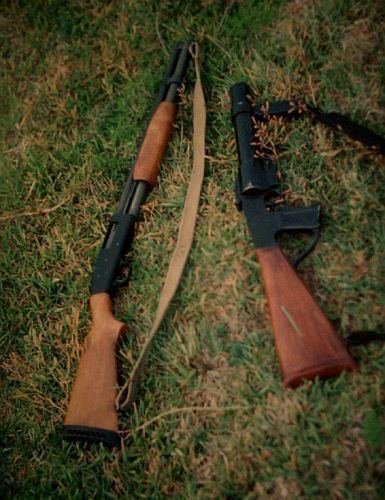 | ||
The Federal Riot Gun, or FRG, was a US-manufactured firearm by Federal Laboratories Inc., designed to fire non-lethal munitions. Its ammunition include 37 and 38mm baton and tear gas rounds. The baton rounds were cylindrical, rubber projectiles. Fired at a relatively low velocity, the baton rounds were intended to knock rioters down, or momentarily stun them, but not to cause serious injury or death. Safe operating procedures in the British Army eventually ruled out firing them levelly at rioters, as it was found that the rounds could cause serious and permanent injuries. In 1993, a constable of the Bermuda Police Service, acting the role of enemy for a rifle company of the Bermuda Regiment, being exercised at Camp Lejeune USMC Base, was seriously injured by a baton round fired from a soldier's FRG, shattering his jaw, which required extensive surgery to reconstruct. Subsequently, orders were given that the weapons were to be fired into the ground ahead of rioters. The baton rounds would deflect upwards into the rioters, but would lose kinetic energy in the process.
Introduced in the 1930s by Federal Laboratories Inc., of Pennsylvania, the FRG became the standard riot gun used extensively by the British Army throughout The Troubles in Northern Ireland. A single-shot weapon, which broke open by unlocking a catch at the top, it has since been replaced in British use by the multiple-shot ARWEN 37 revolver. It was also issued by the Canadian Army, subsequently the Canadian Armed Forces.
The most widespread model, 37-mm M201-Z, has distinctive ringed barrel.
